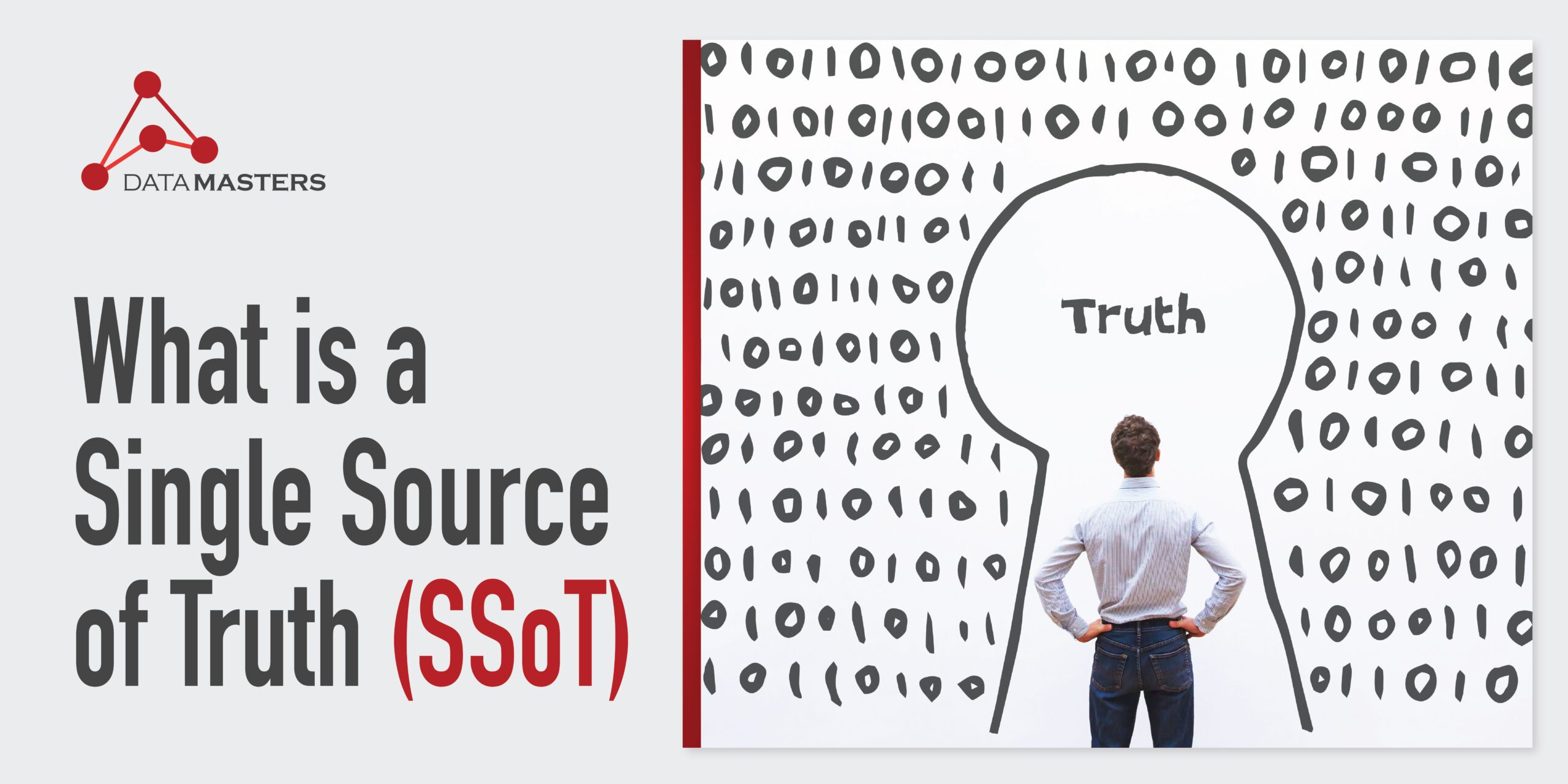In the current digital era, businesses and individuals are regularly producing enormous volumes of data every day across different platforms, making it difficult for organizations to manage all the information they get from multiple sources. As a result, having a single source of truth has become crucial for any organization that wants to build a centralized and trustworthy foundation for data management. As businesses strive to make informed decisions and improve their data quality, understanding and implementing a single source of truth has become crucial for success in the digital age.
This blog dives into the essence of this concept and its role in modern data strategy. It explores how organizations can implement a single source of truth to empower business users and drive strategic decisions. It also examines the benefits and challenges of adopting a single source of truth, including its impact on data analysis, visualization, and self-service analytics. By the end, readers will gain valuable insights into how this concept can transform data management and foster data democratization within their organizations.
What is a Single Source of Truth?
Definition and Core Concepts
A Single Source of Truth, or SSoT, is a comprehensive data storage or warehouse, filled with accurate and structured data, that connects all of the organization’s information in one place [1]. It is the main source of data and the most trustworthy one, acting as the ultimate point of reference. The SSoT concept aims to eliminate data fragmentation, ensure consistency and accuracy, and empower efficient decision-making across teams and departments [1].
At its core, SSoT is not a system, tool, or strategy. Rather, it’s a state of being for an organization’s data, where all information can be found via a single reference point [2]. This centralized approach to data management enables business leaders to make data-driven decisions based on the organization as a whole, rather than relying on compartmental data silos [2].
Key Characteristics of SSoT
The key characteristics of a Single Source of Truth include:
– Integration: All structured data is stored in one place, making it easier to manage, access, and update information [3]. Additionally, the data from different sources is integrated, enabling end users to locate and see each piece of information without having to look for it in multiple locations [2].
– Consistency: SSoT ensures that data is uniform across the organization, minimizing misunderstandings and discrepancies and fostering a more cohesive workflow [3].
– Accuracy: By maintaining data integrity, SSoT prevents errors and ensures that the information used for decision-making is up-to-date and correct [3].
– Accessibility: All departments and teams must have access to the systems and data they use, enabling a comprehensive view of the organization’s information [2].
The implementation of a Single Source of Truth has significant benefits for organizations, including creating a more efficient decision-making process, promoting collaboration, driving innovation, and ensuring teams have reliable information at their disposal.
Implementing SSoT in Organizations
Assessing Current Data Architecture
To implement a Single Source of Truth (SSoT) successfully, organizations have to assess their existing data infrastructure. This involves identifying various data sources, understanding the nature of the data (structured or unstructured) and the business needs, and recognizing current data governance policies [4]. By mapping out the data landscape, companies can pinpoint potential integration challenges and opportunities for data consolidation and harmonization [4].
A crucial step in this process is to assess the organization’s current maturity level. By doing this, it can identify gaps and discover the areas that can be improved, such as lack of clear data ownership, inconsistent data definitions, inadequate data quality processes, or insufficient data security measures [5].
Choosing the Right SSoT Concept
Picking an appropriate SSoT concept is vital for success. The solution should be cloud-based to ensure accessibility from anywhere, anytime [6]. It should also be visual, using an infinite canvas to display resources and show critical relationships between data and documents [6]. Additionally, having a dynamic platform that encourages collaboration and interaction is essential, as it centralizes communication and fosters alignment [6].
When choosing a concept, consider the following characteristics:
– Integration capabilities with existing systems
– Robust features for data consolidation and automation
– Efficient data retrieval and reporting tools
– Scalability to handle growing data needs
Data Governance and Management Strategies
Implementing effective data governance is crucial for SSoT’s success. Organizations should develop robust policies addressing data quality, security, privacy, retention, access, and classification [7]. Establishing data standards that define common data definitions, formats, naming conventions, and quality metrics ensures consistency across the organization [7].
Moreover, consistent audits are vital for maintaining the quality of an organization’s data. These audits help identify discrepancies, outdated information, or gaps in the data [4]. Implementing automated processes to flag outdated or conflicting data can streamline this process [3].
Clear governance frameworks are necessary, establishing roles and responsibilities among team members to oversee the SSoT [6]. This includes defining processes for data entry, modification, and access [6].
Fostering a data-driven culture is equally important. Organizations should educate employees on the importance of SSoT and how to use it effectively [3]. This cultural shift ensures that everyone within the organization values data as a critical asset and is motivated to maintain data quality [3].
Benefits and Challenges of SSoT
Improved Data Accuracy and Consistency
Implementing a Single Source of Truth (SSoT) brings significant advantages to organizations. One of the most important ones is the elimination of data discrepancies. By structuring the organization’s data and making it understandable for end users, everyone within it will be able to use the same, accurate information [3]. This consistency ensures that all teams are kept in sync, minimizing the chance of misunderstandings and mistakes resulting from inconsistent or out-of-date data.
Enhanced Decision Making and Efficiency
With an SSoT, organizations can trust that their data is accurate and trustworthy. This leads to faster and more informed decision-making because employees do not have to verify multiple sources or align conflicting information [3]. Reliable data at their fingertips allows leaders to make informed decisions swiftly, driving the organization forward with confidence [7].
An SSoT also increases efficiency and productivity by reducing the time employees spend searching for information and fixing errors. Instead of searching in various documents and databases, team members can quickly find what they need in the centralized repository [3]. This allows employees to focus more on their core tasks and not waste time looking for what they need, boosting the organization’s overall productivity.
Overcoming Implementation Hurdles
Despite its benefits, implementing an SSoT comes with challenges. Employees often do not welcome change from the get-go and are not willing to adopt a new system. To overcome this, organizations should clearly demonstrate the benefits of an SSoT, showing how it can simplify work, reduce errors, and save time [3]. Additionally, providing adequate training is crucial to ensure everyone understands how to use the new system and feels comfortable with it. This is where data literacy comes into play, which is the process of educating employees on how to read, analyze, present, and work with data.
Another challenge is dealing with legacy systems and data silos. Because most organizations have outdated systems and store fragments of their data in silos, the implementation of an SSoT can be more complex [3]. The key is to integrate these systems gradually, starting with the most critical data sources and ensuring seamless data migration. Using data integration tools can automate and streamline this process, while a phased approach can help minimize disruptions and ensure a smoother transition.
Conclusion
The Single Source of Truth concept has a profound influence on modern data management strategies, offering organizations a path to streamline their information flow and boost decision-making processes. By centralizing data and ensuring its consistency and accuracy, SSoT enables businesses to navigate the complexities of today’s data-driven landscape with greater confidence.
While implementing SSoT comes with its share of challenges, the long-term benefits far outweigh the initial hurdles. To make the most of this approach, organizations need to carefully assess their current data architecture, choose the right concept, and set strong data governance strategies. By doing so, they can unlock the full potential of their data assets, leading to improved efficiency, better collaboration, and ultimately, a competitive edge in the marketplace.
FAQs
What is a “single source of truth”?
The term ‘single source of truth’, or SSoT, refers to the practice where all the data from various systems within an organization is centralized in one specific location. This doesn’t refer to a specific system or tool, but rather a situation where all organizational data is accessible via one reference point.
How can a single source of truth be implemented in an organization?
Implementing a single source of truth involves ensuring that every individual in the organization refers to the same data for making business decisions. To establish an SSoT, it’s essential to provide a unified data storage source that all relevant personnel can access and get the information they need.
Why is having a single source of truth beneficial?
A single source of truth is beneficial because it helps eliminate data discrepancies, reduces the likelihood of errors, and guarantees that everyone in the organization has access to the most current and accurate information. In turn, this improves the decision-making process across the entire organization.
What does the principle of single truth in data management entail?
The principle of single truth in data management, often referred to as SSoT architecture, ensures that all data elements are controlled and updated in only one place within an information system. This concept efficiently organizes information models and schemas while promoting a cohesive data structure, avoiding duplication, and preserving data consistency and integrity.
References
[1] – https://document360.com/blog/single-source-of-truth/
[2] – https://www.mulesoft.com/resources/esb/what-is-single-source-of-truth-ssot
[3] – https://www.getguru.com/single-source-of-truth
[4] – https://www.datablast.io/post/building-a-ssot-8-best-practices-for-data-integration
[5] – https://www.semarchy.com/blog/data-governance-strategy/






